Published in 2016 by Enslow Publishing, LLC
101 W. 23rd Street, Suite 240, New York, NY 10011
Copyright 2016 by Robert Gardner
All rights reserved.
No part of this book may be reproduced by any means without the written permission of the publisher.
Cataloging-in-Publication Data
Gardner, Robert.
Bicycle science fair projects / by Robert Gardner.
p. cm. (Prize-winning science fair projects)
Includes bibliographical references and index.
ISBN 978-0-7660-7016-5 (library binding)
1. Bicycles Experiments Juvenile literature. 2. Science projects Juvenile
literature. I. Gardner, Robert, 1929 . II. Title.
QC73.4 G36 2016
531.6d23
Printed in the United States of America
To Our Readers: We have done our best to make sure all Web site addresses in this book were active and appropriate when we went to press. However, the author and the publisher have no control over and assume no liability for the material available on those Web sites or on any Web sites they may link to. Any comments or suggestions can be sent by e-mail to .
Portions of this book originally appeared in the book Bicycle Science Projects: Physics on Wheels.
Illustration Credits: Accurate Art, Inc. c/o George Barile.
Photo Credits: GraphicArtis/Archive Photos/Getty Images, p. (mountain bike).
Cover Credits: Ohn Mar/Shutterstock.com (science background); tarasov_vl/Shutterstock.com (mountain bike).
CONTENTS
Introduction
CHAPTER 1 Bicycle Beginnings
Staying Upright on a Bike
Uphill Strategy
Why Wheels?
 Why a Differential Gear?
Why a Differential Gear?
 Ball Bearings, a Friction Reducer
Ball Bearings, a Friction Reducer
CHAPTER 2 Bicycle Speed and Gears
 A Simple Pair of Gears
A Simple Pair of Gears
 Your Bicycle Gears
Your Bicycle Gears
What Is the Actual Path of a Bicycle Wheels Rim?
CHAPTER 3 Bicycles for Measuring Speed and Distance
 Using Your Bike to Measure Distance
Using Your Bike to Measure Distance
 Ratios Related to Circles
Ratios Related to Circles
 Another Way to Measure Distance With Your Bike
Another Way to Measure Distance With Your Bike
 Measuring Your Bicycles Speed
Measuring Your Bicycles Speed
Measuring Your Bicycles Speed With Water Balloons
CHAPTER 4 A Cyclist and Newtons Laws of Motion
 Friction and Your Bicycle
Friction and Your Bicycle
Bicycle Wheels and Ball Bearings
Pedal Positions and the Driving Force on a Bicycle
Bikes, Brakes, and Levers
A Bicycle-Wheel Centrifuge
CHAPTER 5 Bicycle Physics
Bikes, Mechanical Advantage, Work, and Efficiency
 Another Way to Measure the Frictional Force on a Bike
Another Way to Measure the Frictional Force on a Bike
 Work, Kinetic Energy, Efficiency, and Your Bike
Work, Kinetic Energy, Efficiency, and Your Bike
 Doing Work and Generating Power in Different Gears
Doing Work and Generating Power in Different Gears
Further Reading
Web Sites
Index
INTRODUCTION
Bicycles are a very common mode of transportation. Either you or someone in your family most likely owns one. Assuming you can ride a two-wheeler, there are a lot of experiments you can do with a bike. And, since riding a bike is fun, you can have fun and learn a lot of science as well.
This book provides many experiments you can do with your bicycle. In general, the easier experiments are found in the early chapters. The more challenging experiments are in the last two chapters. But do not stop experimenting after you finish reading this book. As you do experiments, you will probably think of other experiments of your own. That is the way science works: one experiment leads to another.
As you experiment with your bicycle, keep a notebook handy. If possible, buy a notebook that has graph paper on at least some pages so that you can make graphs and diagrams easily. Jot down your ideas, data, and observations in your notebook. When you do experiments, explain what you are doing and record the measurements, numbers, and other factual information you collect.
Often the solution to a difficult problem or the beginning of a new idea arises unexpectedly. It may happen when you are relaxing, sleeping, dreaming, awakening, or, like me, when you are riding your bike. That is why many scientists keep one small notebook beside their bed and one in their pocket. They record their thoughts when ideas come to mind. They know that if they dont, they are likely to forget them.
When you use a bicycle for experiments, you will have to take measurements and do calculations. So, you will find a calculator a handy tool. Perhaps you can keep one, along with your notebook and a pencil, in a carrying bag fastened to your bike.
Science Fairs
Judges at science fairs do not reward projects or experiments that are simply copied from a book. For example, a diagram or model of a bicycle would not impress most judges; however, a unique method for measuring acceleration while riding your bicycle would attract their attention.
Science fair judges tend to reward creative thought and imagination. It is difficult to be creative or imaginative unless you are really interested in your project. Be sure to choose a subject that appeals to you. And before you jump into a project, consider, too, your own talents and the cost of materials you will need.
If you decide to use an experiment found in this book for a science fair, you should find ways to modify or extend it. This should not be difficult because you will discover that as you do these projects, new ideas for experiments will come to mindexperiments that could make excellent science fair projects, particularly because the ideas are your own and are interesting to you. Some ideas for such projects can be found at the end of some experiments in this book.
If you decide to enter a science fair and have never done so before, you should read some of the books listed in the Further Reading section. These books deal specifically with science fairs and will provide plenty of helpful hints and lots of useful information that will enable you to avoid the pitfalls that sometimes plague first-time entrants. You will learn how to prepare appealing reports that include charts and graphs, how to set up and display your work, how to present your project, and how to talk to judges and visitors.
Safety First
Most of the projects included in this book are perfectly safe. If any danger is involved in doing an experiment, it will be made known to you. In some cases, to avoid any danger to you, you will be asked to work with an adult. Please do so. We do not want you to take any chances that could lead to an injury. The following safety rules are well worth reading before you start any project.
1.Whenever doing experiments that involve riding a bicycle, you should wear an approved helmet and closed-toed shoes.

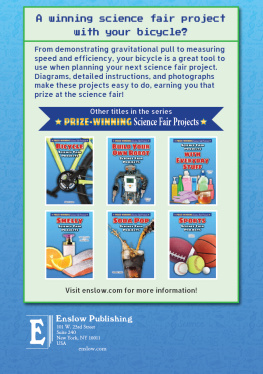


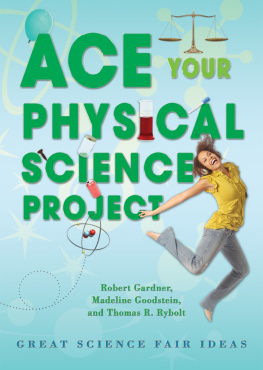


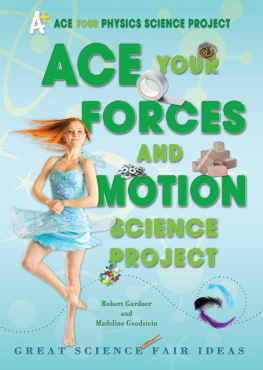

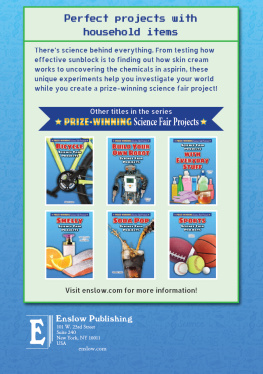






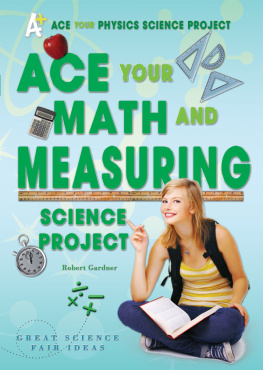




 Why a Differential Gear?
Why a Differential Gear?